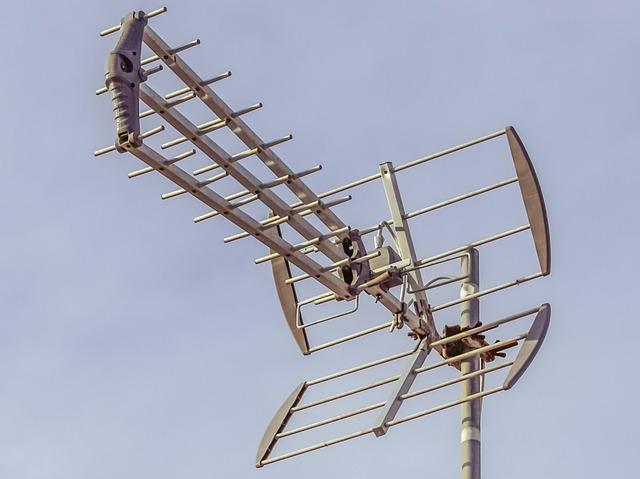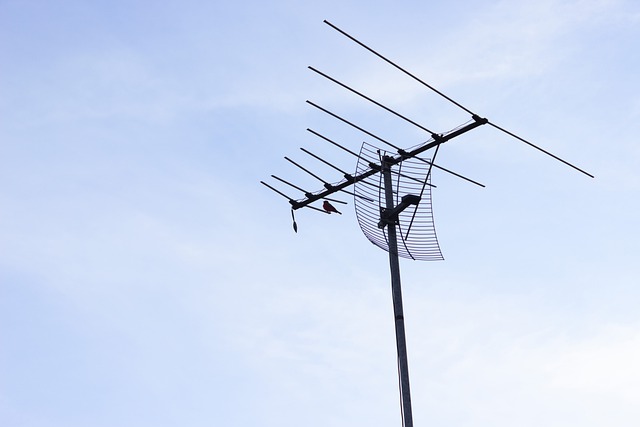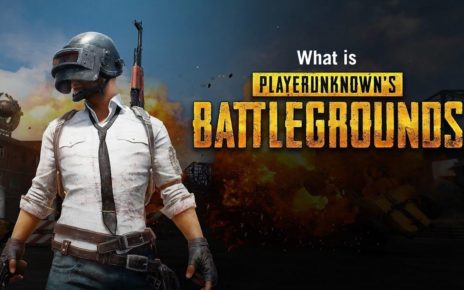It’s common for people to have multiple television sets in their homes. According to some studies, Americans have an average of 2.5 televisions per home. This is why this question is so common. Most people want to know how to connect multiple televisions to one antenna. This article will cover everything related to the topic, and show you how to do it correctly.
Table of Contents
The Antenna Splitter Installation Guide: Everything You Need to Know
An antenna splitter may seem simple to connect one antenna to multiple TVs in your home. However, simply mounting an antenna on the roof and running coaxial cable from a TV Splitter can result in less than stellar results.
This is what you need to remember: signal loss can occur when you run long coaxial cables. The signal loss from a cable splitter will be greater. Below are some key steps to reduce signal loss. These six simple steps will ensure that you get crisp, bright images and as many channels on your TVs as possible.
6 Steps to Connect Your Antenna To Multiple TVs With A Physical Splitter

1. Install Antenna
First, you need to purchase an HDTV Antenna. It will depend on whether the antenna is outdoor or indoor. An outdoor antenna will provide you with more channels that you ever imagined. An indoor antenna is fine if you live far away from major broadcast towers.
For more information on the best type of antenna, see our discussion.
No matter what type of antenna you choose, it is important to position it in the best possible location for reception. It is important to position it high enough and close enough to broadcast towers so that you receive the best reception. Further information about placement is available below.
2. Find the perfect coaxial cable
Signal loss is our enemy. RG-6U coaxial cables reduce signal loss by half when compared to other cables. RG-6U is the preferred choice of most antenna manufacturers.
This coaxial cable is slightly thicker and reasonably priced at Amazon and Monprice.
Although you can connect an antenna to existing wiring, it won’t give the best picture. Most likely, your cable installer used RG59 coaxial cable. If you are unable to avoid using this cable as an antenna, then it is best not to use it. This cable will not help you receive the best signal, especially if it’s used for one antenna.
3. Connect Coaxial Splitter
After you have connected your antenna, you will need to connect a splitter. This inexpensive device is used to split an antenna cable into multiple cables. This allows you to use the same antenna on multiple TVs so that you can view your local channel on each television in your home.
TV antennas have 75 ohms impedance coax outputs. The inputs for TVs are the same. These connections, whether made directly or via a spitter, are best made using RG6 coaxial cables. RG59 is fine, but it was not designed to provide the bandwidth of HDTV. You will need RG11 if you plan to run lots of cabling (eg to other buildings).
Connect the antenna to your splitter’s input.
4. Connect Main TV
You should not connect the splitter simultaneously to multiple devices. Connect one output of the splitter to the first TV. This is possible for a few reasons.
You must first make sure your base system works. Your signal strength will drop as you add more devices. You may need to modify your antenna or install preamps (see step 6 below).
It will also make it more difficult to fix any problems that arise if multiple devices are connected to the splitter.
After you have connected your TV to the internet, run a channel scan. This will tell you if your TV is receiving good signals from the channels you desire. To find out which channels you should be able access, see Available Channels.
5. Connect Secondary TV(s)
After the first TV is working properly, connect your second TV. Signal loss will occur if the cable is physically separated. The output (antenna signal) will be half of what it was. Your first TV may have poor reception. You should check both the first and second TVs. If you find a problem, please go to step 6.
The same can be done for a second TV, and so forth.
6. Install amplifiers (If necessary)
You may need two types of amplifiers for this task:
Preamplifier: A preamplifier is connected between an antenna and the splitter. It amplifies all signals. Make sure you have an antenna that is properly placed before investing in a preamp. Discuss below ). Channel Master Three units are available to suit any situation.
- CM-7778V3 Titan 2 Medium-Gain Preamplifier
- CM-7777V3 Titan 3 High Gain Preamplifier
- CM-7777HD Amplify Adjustable gain Preamplifier
A distribution amplifier: If you connect two TVs to one antenna, a passive splitter is usually sufficient. A distribution amplifier is recommended if you experience loss of channels when you connect more TVs to the antenna. It is basically a powered splitter that copies the input signal to all of the outputs, rather than splitting it. Channel Master and Antennas Direct Distributor amplifiers that are reliable and efficient.
- CM-3410 Ultra Mini 1 (1 port)
- CM-3412 Ultra Mini 2 (2 ports)
- CM-3414 Ultra Mini 4 (4 ports)
- Antennas Direct CDA4 (4 ports)
- CM-3418 Ultra Mini 8 (8 ports)
- Antennas Direct CDA8 (8 ports)
Amplifiers need power. This can be difficult, especially for preamps that might be on your roof. Channel Master also offers a CM-3400XPIPS that plugs into a wall, then distributes power via the coax cable. It’s inexpensive and simplifies the design and setup of your system.
That’s all. It shouldn’t take too long to set up multiple TVs with one antenna. If you’re interested, continue reading for additional information and options.
3 Steps Connect Your Antenna To Multiple TVs With A Wireless Tuner

This method is proven to work. Splitters have been used with cable lines for many decades. It is also very simple. You can view content from your antenna by setting your TV to the default input. It’s not the only way to share your antenna.
A physical splitter is not necessary to connect an antenna to a tablet or smartphone. There is an alternative: Go wireless!
1. Install the Antenna
This is the identical to above. Find a suitable place to install your antenna. You may need to put in a pre-amp if you receive weak signals. Anything else is not necessary.
2. Connect the Wireless Tuner
Wireless is not for everyone. You will need to buy a device such as the HDHomeRun that supports ATSC-compliant tuners. These devices cost between $90 and $250. This is a great investment over the lifetime.
These units usually have two to four tuners. This is how many devices can receive the antenna signal simultaneously. This can be done in a couple of ways.
Two connections are essential for a wireless tuner device. The first is the coax connection you attach to your antenna. This is the same as , which you use to connect the antenna to your splitter.
You connect the other port to your wireless router via an Ethernet port. That’s all! Physical set-up is very minimal.
Many units have an USB connection to connect an external hard drive. This allows you to set up an external hard drive DVR to connect your antenna.
3. Connect devices to a wireless tuner
You will need to download the app in order to use the wireless tuner. These apps are available on most devices. SiliconDust, the makers of HDHomeRun, offers apps for Android, iOS and Amazon Fire TV.
Now you’re done. You can now see all channels that your antenna offers on all of your devices.
Faqs about TV antenna installation
All US TV antenna were required to broadcast digitally from June 13, 2009. Although there were some inconveniences, this change brought many benefits — including the broadcasting of HDTV and subchannels. These signals can be picked up by a digital TV antenna and delivered to televisions.
You don’t have to use an Over-the Air antenna on every TV. If you use one these methods to spread your antenna’s signal around your home, then you are fine. You should not use more than one TV antenna.
Because:IT IS EXPENSIVE The more TVs you own, the more expensive it is to purchase a separate antenna for each one.Not all television sets are in the best location for Over-the Air signal reception. If you have the same TV antenna make and model, you can get more channels in your living room than you would in the basement.
YOUR LOCATION REQUIRES AN OUTDOOR/ATTIC ANTENNA – Live over 30 miles of your local broadcast towers. To receive a consistent Over-the Air TV signal, you will likely need a larger OTA antenna mounted on the roof or in your attic. This is not possible if your antenna is next to your TV.
Antenna amplifier can be confusing. Two types of antenna signal amplification are common. The antenna gain is the antenna’s inherent amplifier. This term is used mainly when discussing directional antennas.
Antenna gain is a term that refers to an antenna’s gain. It doesn’t add any power to the signal. This is more a representation of the antenna’s ability to convert the signal into an electric current. Directional antennas focus that ability in one direction and sacrifice gain in the other directions.
Another type of amplifying amplifies the signal once it has been received. This is commonly called “amplifier gain”, and it will not improve the reception of the signal from the antenna. Antenna gain is the only way to improve reception of a TV tower signal. Amplifier gain can be used to compensate for the loss of line and noise caused by digital tuners.
This distinction is crucial. This distinction is important. If the antenna can be connected directly to one TV, then amplifiers are only necessary to compensate for signal loss due to splitters and cable connections. If you had problems before splitters were invented, you may want to consider a directional antenna that has a higher gain.
The main source of amplifier gain comes from two devices: a preamplifier and a distribution amplifier. The function is the same, but with slight differences. An antenna is equipped with a preamplifier that amplifies the signal. The antenna should have a preamplifier installed to cut over a coaxial cable that is more than 100 feet long between the splitter and the antenna (or the single TV).
An amplifier for distribution is located just before the splitter. It amplifies the signal to be split to multiple TVs. A splitter can also be used by some distribution amplifiers such as the one shown below.
Both amplifiers have similar functions. If the cable runs are long before the splitter, you can try installing a preamplifier and see if that helps. A distribution amplifier is a better option if loss is occurring from the splitter and not the cable.
Analog TV is now completely off. However, you can still receive its signal via a traditional antenna and tune it correctly. Basic channels can be viewed for free, while paid channels can be accessed. The second option is where the client pays the tariff selected by the operator to be able to view a large number digital channels.
A set-top box is required to decode digital TV signals. The tuner converts the signal into digital and sends it to the television. The set top box connects with one TV. The signal can be divided using adapters.
An antenna can connect as many TVs as you like, provided it is correctly set up and is receiving a good signal. You could use an extended coaxial splitter to connect as many TVs as you like.
However, connecting too many TVs can lead to poor signal quality and poor signal. Most people have two or three TVs in their homes so they can all watch the same program at once. It is also more economical to connect equipment to one source of broadcast than to separate sources. It all depends on how strong and clear the signal is.
Double-wiring is technically simple. To connect two TVs to one antenna, you only need to buy dividers (doubles or tees). They each receive one signal from an antenna cable. They split the signal and send it to the desired channels.This method can be used to power 3, 4, or 5 TVs.
Before connecting multiple TVs to an antenna, it is important to verify the signal quality and power. This can be verified with an ordinary multimeter before you connect equipment.
A second way to verify the signal strength is to connect a TV and tuner to one connected TV. This will require:
Connect the antenna to your set-top box. The set-top box can be connected to the TV via HDMI cable or VGA cable. Turn on the tuner. Search for channels to tune.
The remote control can be taken from the tuner. Press the INFO button twice. The screen will display the signal strength of the antenna.
Use the remote control to switch to menu mode and manual channel search mode. Enter the number for the channel that is the most clear in the image. It is usually “Russia” or “1 Channel”, depending on where you are located.
You can view the TV signal level for the selected channel.
The indicator is higher than 70% . This means that you can connect two televisions to one antenna with no need for an amplifier. You will need an amplifier to connect a passive or activate cymbal. It is quite small and no amplifier will help (below 20%)
It is worth buying all components before you start connecting TVs to an antenna. Even if some elements are not required, it is better for them to remain ” reserved” rather than being interrupted during the connection and having to run to the nearest shop.
Most of the time, it is necessary to connect a circuit between one antenna and two or more TVs.
Cable Splitter with 2 outputs. A plug is needed for each additional output. This is possible with a 75-ohm resistor.
5 F connectors. These connectors are required to connect the coaxial cable and antenna. Two pieces are required. For every TV.
2 adapter plugs to connect cables directly to your TV.
2 TV cables the length you require.
To decode the digital signal, you will also need two receivers. The cords that connect the equipment to the TV (usually included in the kit) You can also purchase batteries for your remote control ahead of time. This will allow you to tune your TV channels immediately.
An alternative scheme is the holderless one. It is not as reliable. You can connect two TVs to one analogue antenna by using this option. It is composed of the following:
Two coaxial cables and an antenna are required.
The wire ends are removed. Experimentation determines the distance between the tip and the stripping.
Braid and foil are not braided. They are also twisted together. The center wires are kept separate in this instance.
Two veins are attached to the antenna with screws. The shield of the one cable is connected to the braided structure. It is crucial that the wires are not in direct contact with the screen during this trick.
The cores are then connected to two TVs via cables.
This connection should improve signal strength. It takes time in practice. It requires knowledge about antenna connection features. It does not guarantee long-term performance.
Conclusion
This article will show you how to connect multiple TVs to an antenna. This process is simple, but you should be aware of what you are doing to ensure you don’t get poor signal quality or poor image quality. It is important that all household members have the same quality TVs. This article was helpful.




